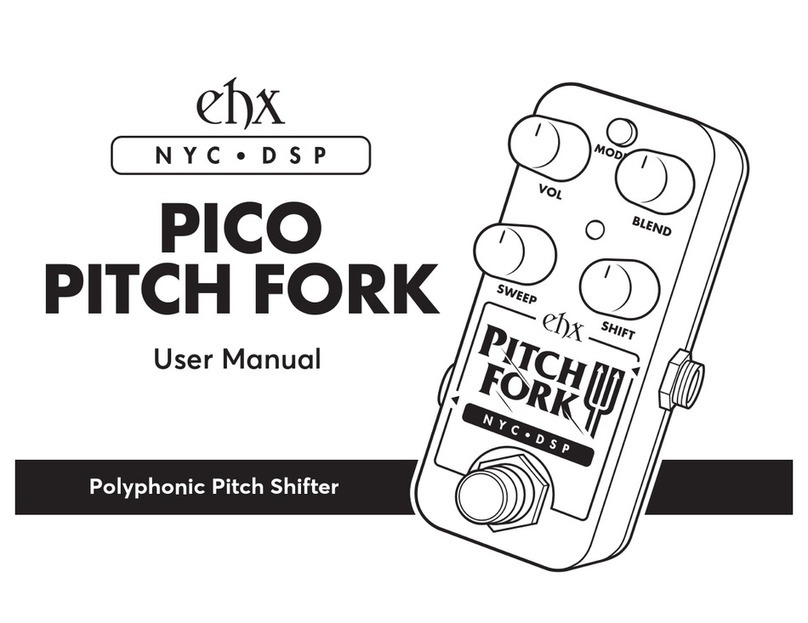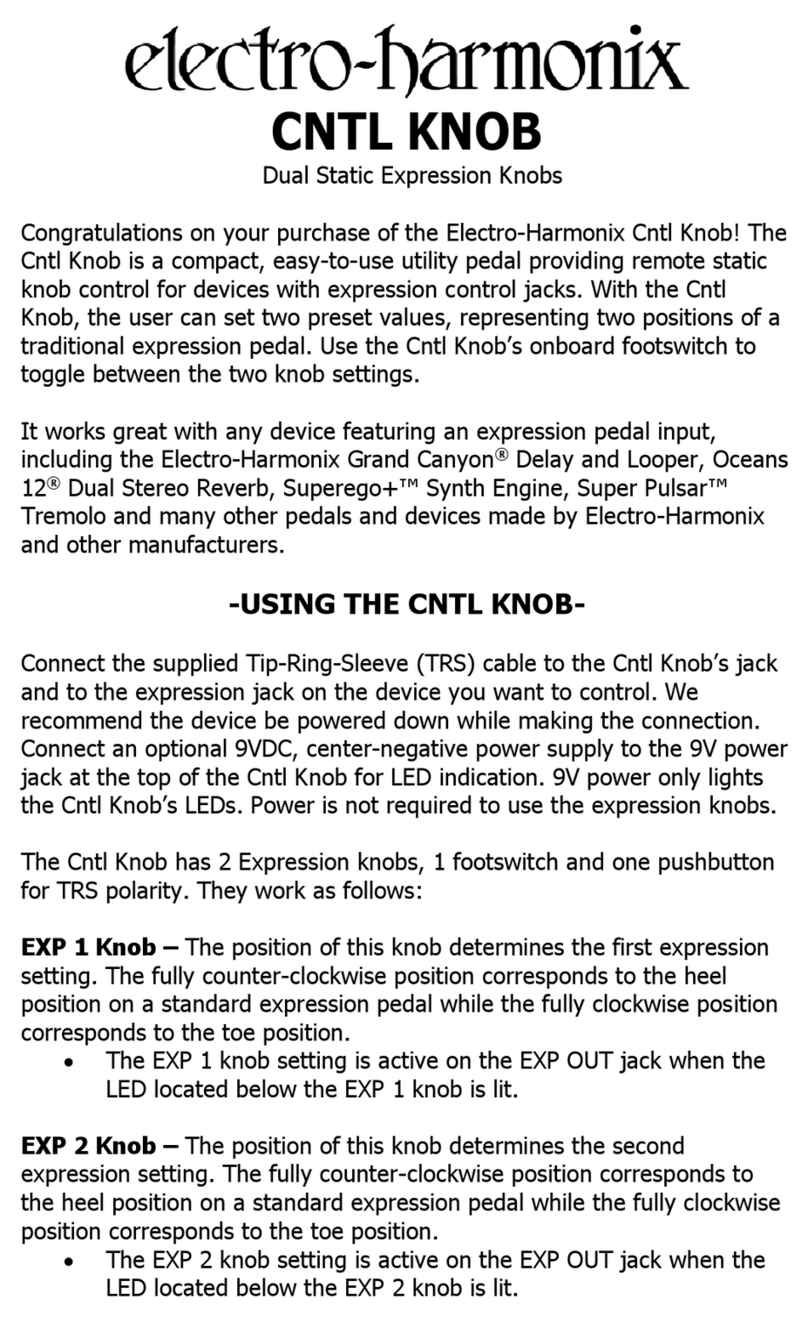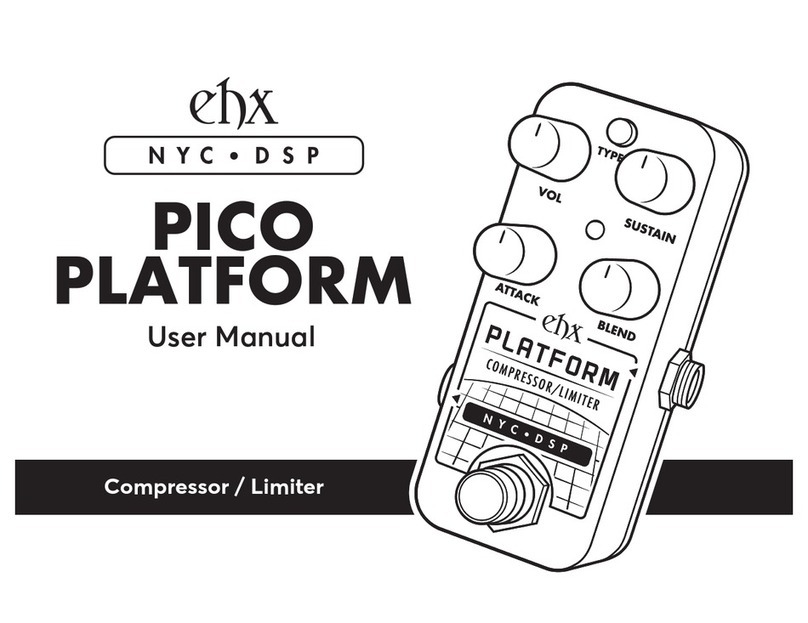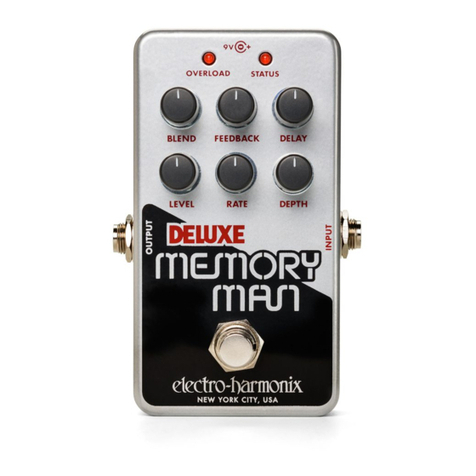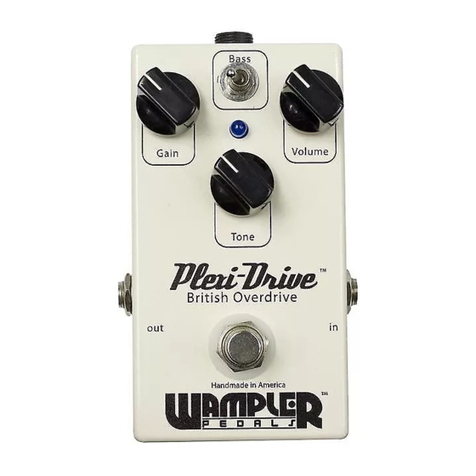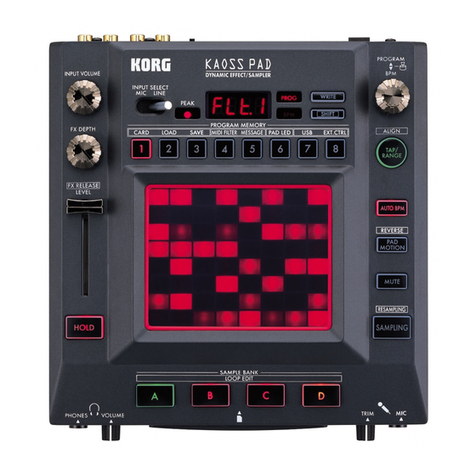EHX STEREO POLYPHASE User manual

- WARRANTY INFORMATION -
Please register online at http://www.ehx.com/product-registration or complete and return the enclosed
warranty card within 10 days of purchase. Electro-Harmonix will repair or replace, at its discretion, a product
that fails to operate due to defects in materials or wor manship for a period of one year from date of
purchase. This applies only to original purchasers who have bought their product from an authorized Electro-
Harmonix retailer. Repaired or replaced units will then be warranted for the unexpired portion of the original
warranty term.
If you should need to return your unit for service within the warranty period, please contact the appropriate
office listed below. Customers outside the regions listed below, please contact EHX Customer Service for
information on warranty repairs at info@ehx.com or +1-718-937-8300. USA and Canadian customers: please
obtain a Return Authorization Number (RA#) from EHX Customer Service before returning your product.
Include with your returned unit: a written description of the problem as well as your name, address,
telephone number, e-mail address, and RA#; and a copy of your receipt clearly showing the purchase date.
United States & Canada
EHX CUSTOMER SERVICE
ELECTRO-HARMONIX
c/o NEW SENSOR CORP.
55-01 2ND STREET
LONG ISLAND CITY, NY 11101
Tel: 718-937-8300
Email: [email protected]
Euro e
JOHN WILLIAMS
ELECTRO-HARMONIX UK
13 CWMDONKIN TERRACE
SWANSEA SA2 0RQ
UNITED KINGDOM
Tel: +44 179 247 3258
Email: electroharmonixu @virginmedia.com
This warranty gives a purchaser specific legal rights. A purchaser may have even greater rights depending
upon the laws of the jurisdiction within which the product was purchased.
To hear demos on all EHX pedals visit us on the web at www.ehx.com
Email us at [email protected]
- FCC COMPLIANCE -
This device complies with part 15 of the FCC Rules. Operation is subject to the following two conditions: (1)
This device may not cause harmful interference, and (2) this device must accept any interference received,
including interference that may cause undesired operation. If the device is not installed and used in
accordance with the instructions, it may cause harmful interference to radio communications and void the
user's authority to guarantee the equipment.
Note:
This equipment has been tested and found to comply with the limits for a Class B digital device,
pursuant to part 15 of the FCC Rules. These limits are designed to provide reasonable protection against
harmful interference in a residential installation. This equipment generates, uses and can radiate radio
frequency energy and, if not installed and used in accordance with the instructions, may cause harmful
interference to radio communications. However, there is no guarantee that interference will not occur in a
particular installation. If this equipment does cause harmful interference to radio or television reception, which
can be determined by turning the equipment off and on, the user is encouraged to try to correct the
interference by one or more of the following measures:
•
Reorient or relocate the receiving antenna.
•
Increase the separation between the equipment and receiver.
•
Connect the equipment into an outlet on a circuit different from that to which the receiver is
connected.
•
Consult the dealer or an experienced radio/TV technician for help.
Modifications not expressly approved by the manufacturer could void the user's authority to operate the
equipment under FCC rules.
STEREO POLYPHASE
PHASE SHIFTER
Congratulations on your urchase of the Stereo Poly hase, an envelo e
follower and LFO controlled hase shifter. The Stereo Poly hase is a
s ectacular hase shifter that uses o tocou lers to roduce a smooth,
liquidy tone that can elevate your laying out of this world. Unlike most
hase shifters, the Stereo Poly hase FEEDBACK control gives you the
ability to vary the sound of the hase shifter, so that you have the final say
on the character of the hase shifter’s tone.
The Stereo Poly hase allows for o timal user control in three modes of
o eration. In ENV mode the Stereo Poly hase is a hase shifter controlled
by an envelo e follower. In LFO mode the Stereo Poly hase is a hase
shifter controlled by a low-frequency oscillator. In EXP mode use an
ex ression edal (not included) to control the hase shifter. You may also
use an ex ression edal in LFO mode or in ENV mode to control the range
of the hase shifter. Hook u the Stereo Poly hase in stereo (each out ut
to a se arate am /mixer channel) for a broad stereo image.
— POWER —
— CONTROLS —
FEEDBACK Knob – Controls the amount of signal fedback from the output of the phase
shifter circuit back into the input of the phase shifter circuit. As you turn the feedback control
up, the phase shift effect will sound more pronounced and even sound ‘peaky’ at high settings.
The FEEDBACK knob is always active.
MODE Knob – When set to ENV the phase shifter is controlled by an envelope follower.
When set to LFO the phase shifter is controlled by a low-frequency oscillator. When set to
EXP the phase shifter is controlled by an expression pedal (not included).
WARNING:
Your unit comes equipped with a 24 Volt/100mA AC external power
adapter.
Use only the ower ada ter su lied
, and ma e sure it is appropriate to
your location (USA, Europe, Japan, Australia). Use of the wrong adapter can cause
damage to the unit or to you, and will void the warranty. Connect the included
24VDC/100mA AC Adapter to the Power Jac , located at the top-center of the Stereo
Polyphase.

GAIN Knob/OVERLOAD LED – Active ONLY in ENV mode. Controls the sensitivity of
the envelope follower circuit. In ENV mode, an envelope follower controls the phase shifter.
This means that the amplitude of the input signal (your instrument) will determine the
response of the phase shifter. Use the GAIN knob to set the amplitude of the envelope
follower circuit. When the output of the GAIN knob exceeds the maximum amount of phase
shift, the OVERLOAD LED will light up. When you first begin using the ENV setting, we
suggest you turn the GAIN knob up enough so that the OVERLOAD LED briefly lights up on
most of your notes. Please note the OVERLOAD LED may light up when the mode knob is
set to either LED or EXP modes but the envelope follower will not modulate the phase shifter
in these modes.
START Knob – Sets the START point of the phase shifter’s range.
STOP Knob – Sets the STOP point of the phase shifter’s range.
A Note on RANGE of modulation:
The difference between the START and STOP knobs determines the RANGE of modulation.
For maximum RANGE set and START knob to minimum and the STOP knob to maximum,
or vice versa. As you move the START and STOP knobs closer together, you will decrease the
RANGE of modulation. These knobs can also be used together to voice the phase shifter. If
you put both knobs at their minimum positions and turn them simultaneously to the maximum
position, while playing, you will hear the range of sounds available to you.
A Note on DIRECTION of modulation:
The relative position of the START and STOP knobs also determines the DIRECTION of
modulation. For example, when using the ENV setting, if START is below STOP, when you
pluck a note the phase shifter will jump up from the START position to the STOP position,
then slowly descend back to the START. The opposite will happen if STOP is set below
START.
RATE Knob – Active in LFO mode only. Controls the speed of modulation by adjusting the
LFO’s rate of oscillation.
Toggle Switch – In ENV mode the toggle switch determines the speed at which the phase
shifter reacts to your playing. When set to FAST the envelope follower will respond quickly to
your playing. When set to SLOW the envelope follower will respond slowly to your playing.
In LFO mode the toggle switch determines the shape of oscillation. In the UP position the
LFO will produce a triangle wave, giving the phase shifter a smooth modulation from the
START to STOP settings. In the DOWN position the LFO will produce a square wave
oscillation and the phase will jump between the START and the STOP settings.
EXPRESSION PEDAL/EXP MODE – In EXP mode the phase shifter circuit is controlled
by an expression pedal or control voltage. In this mode, the GAIN and RATE knobs are
inactive. The START and STOP knobs will determine the range of modulation. The ‘toe-up’
position of the expression pedal corresponds to the setting of the START knob. The ‘toe-
down’ position corresponds to the setting of the STOP knob. As you move the expression
pedal from ‘toe-up’ to ‘toe-down’ the phase shifter will move from the START to STOP
settings.
The expression pedal may also be used in ENV mode and in LFO mode. Use the START and
STOP knobs to determine the RANGE of modulation. When the expression pedal is ‘toe-up’
the envelope and LFO will modulate over the full range set by the START and STOP knobs.
As you move the expression pedal to ‘toe-down’ the ENV and LFO RANGE will decrease
towards the point set by the STOP knob.
FOOTSWITCH/STATUS LED – The footswitch engages/disengages the effect. If the effect
is engaged, the LED will light up. In true-bypass mode, the LED is off.
INPUT Jack – Connect your instrument’s output to this ¼” mono jack. The input impedance
presented at this jack is 380 kohms.
MAIN OUT Jack – Connect this ¼” mono jack to your amplifier’s input. The output
impedance presented at this jack is 250 ohms. When using the Stereo Polyphase as a mono
device we recommend you use the MAIN OUT jack.
STEREO OUT Jack – Connect this ¼” mono jack to your second amplifier’s input. The
output impedance presented at this jack is 250 ohm. When using the Stereo Polyphase as a
stereo device use the STEREO OUT jack for your second channel.
EXP. PEDAL Jack – Connect this ¼” stereo jack to your expression pedal. The
expression pedal must have a connection for a TRS cable, stereo ¼”. You cannot use
a volume pedal. We recommend the following expression pedals: M-Audio EX-P,
Moog Expression Pedal, and Roland EV-5. You may also connect a Control Voltage,
from a synthesizer for example, to the Exp. Pedal Jack. The Control Voltage must be
between 0V~5V.
Other EHX Music Pedal manuals
Popular Music Pedal manuals by other brands
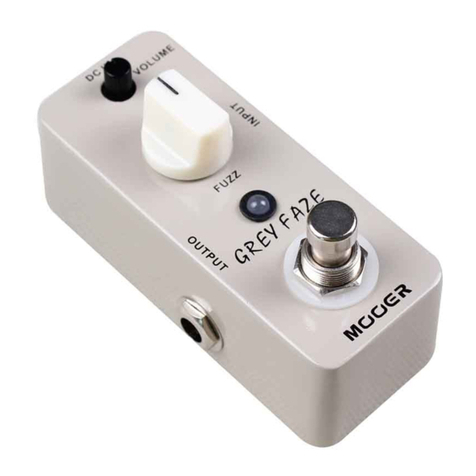
Mooer
Mooer GREY FAZE owner's manual
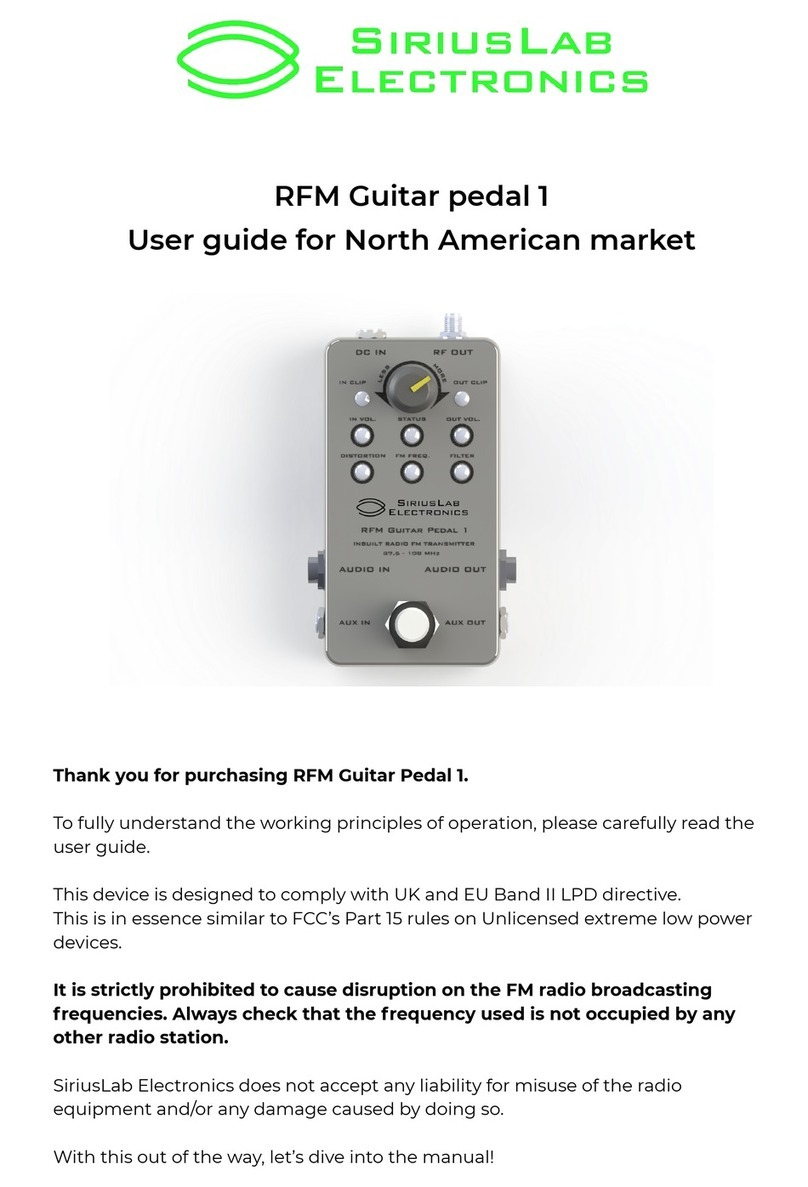
SiriusLab Electronics
SiriusLab Electronics RFM Guitar pedal 1 user guide

JRM/1776effects
JRM/1776effects Multiplex Echo Machine manual
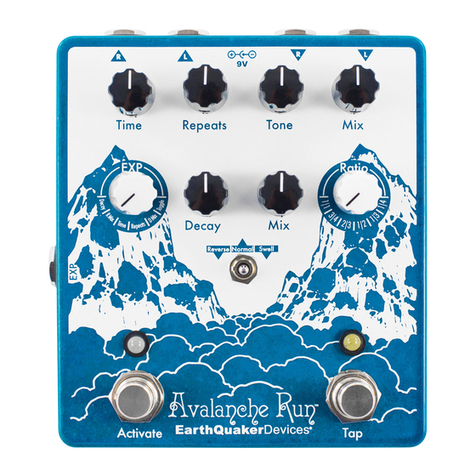
EarthQuaker Devices
EarthQuaker Devices Avalanche Run Operation manual
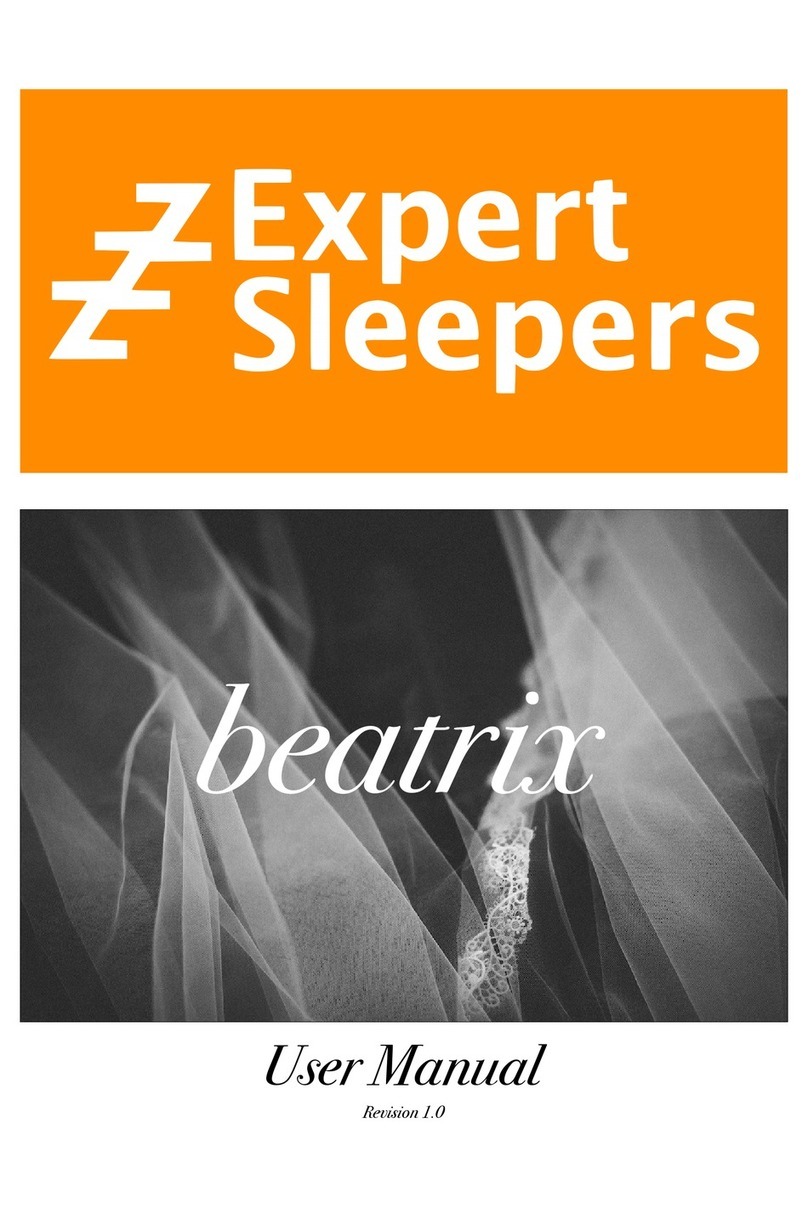
Expert Sleepers
Expert Sleepers beatrix user manual

GOD CITY INSTRUMENTS
GOD CITY INSTRUMENTS HM-1 V1.0 Build guide
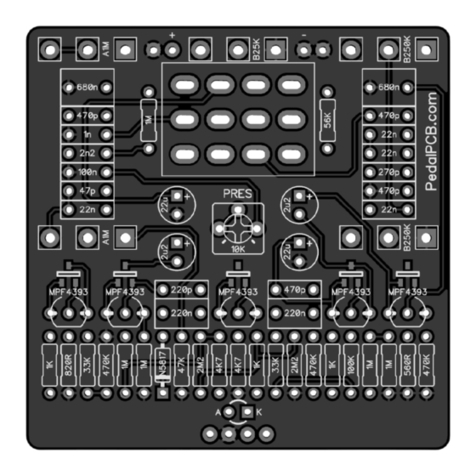
PedalPCB
PedalPCB Covert Overdrive Wiring diagram
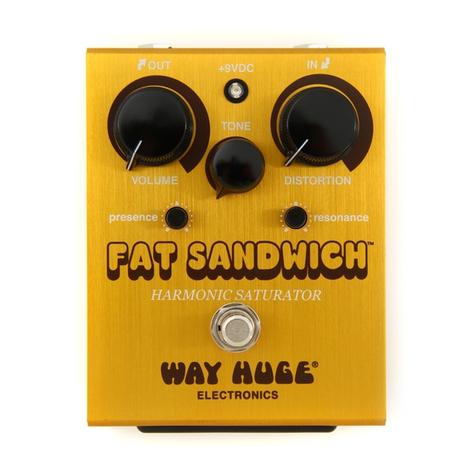
Way Huge
Way Huge FAT SANDWICH instruction manual
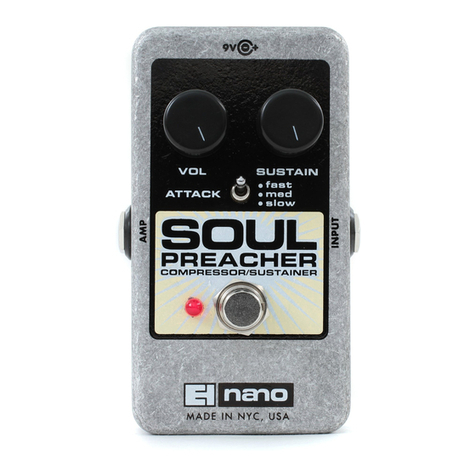
Electro-Harmonix
Electro-Harmonix nano SOUL PREACHER manual
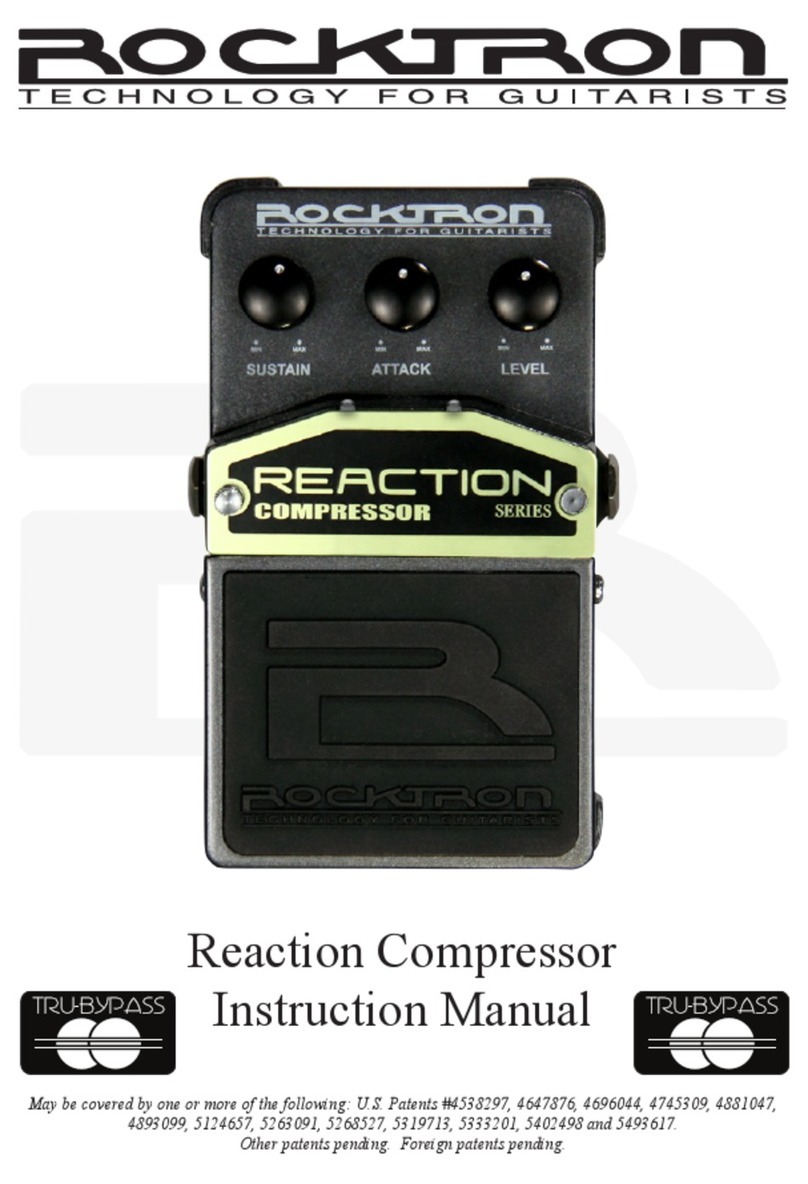
Rocktron
Rocktron Reaction Compressor instruction manual
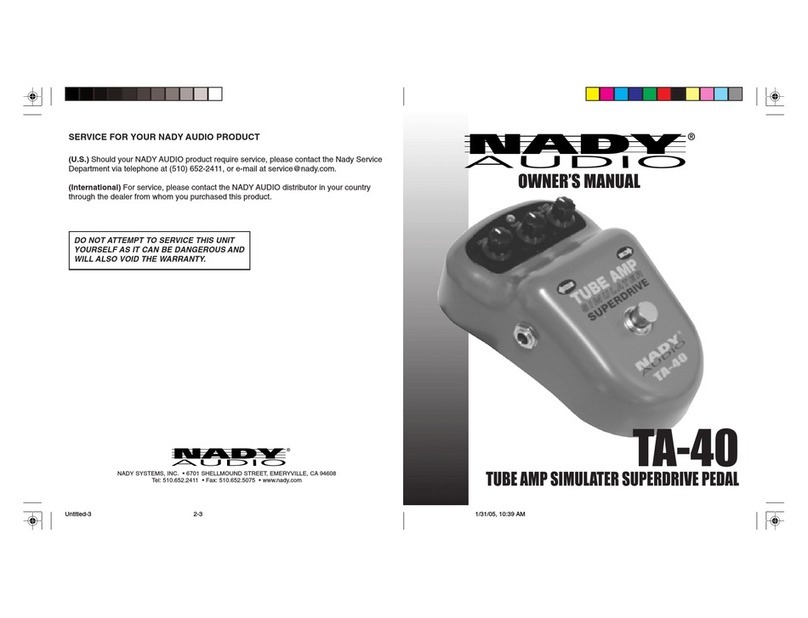
Nady Systems
Nady Systems TA-40 owner's manual
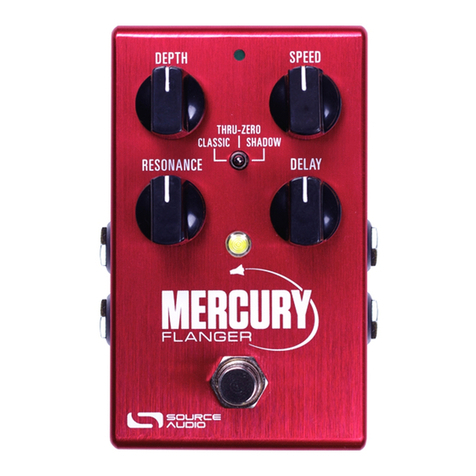
Source Audio
Source Audio Mercury Flanger user guide

